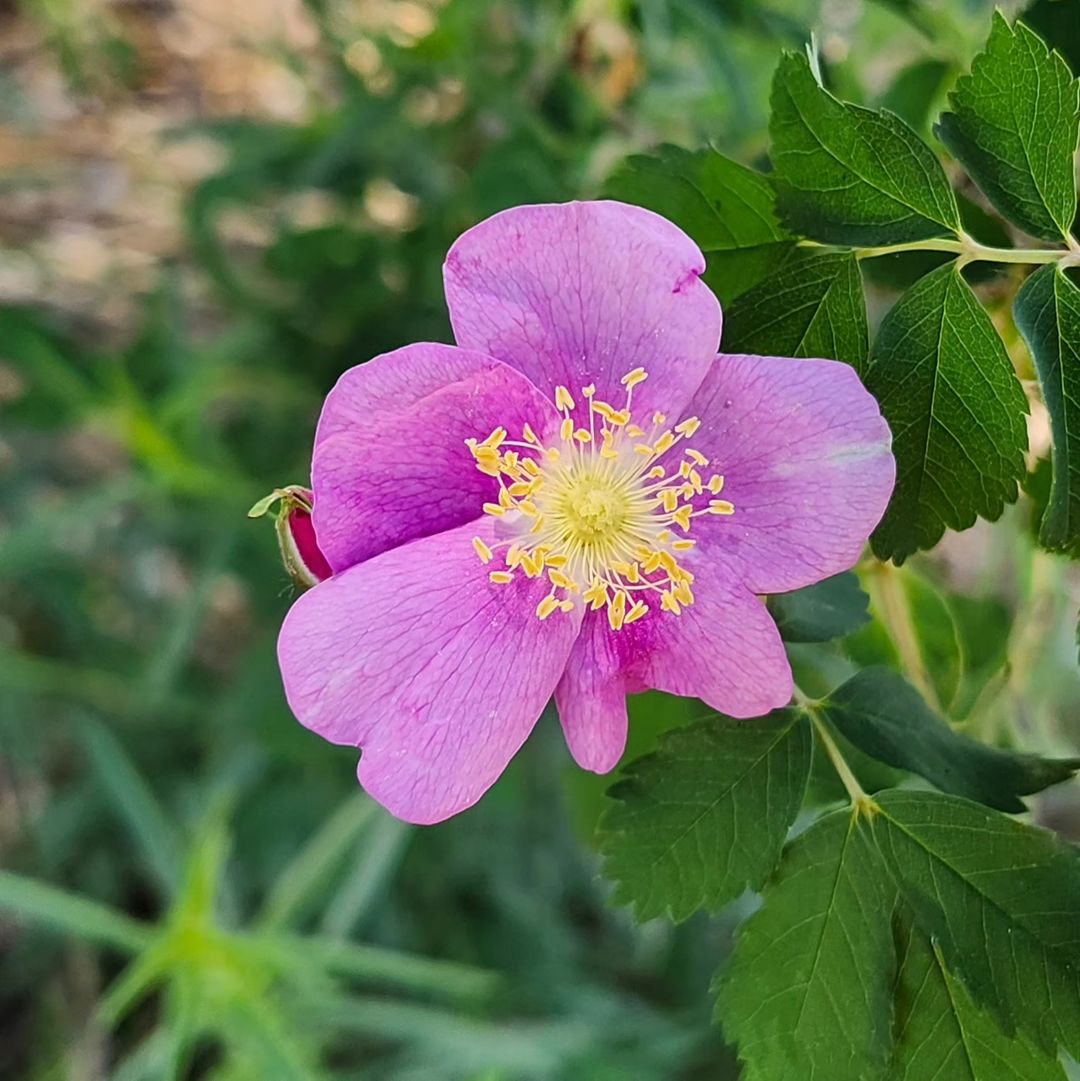Nootka Rose Info: Discovering the Wild Beauty
In the coastal landscapes of the Pacific Northwest, where rugged cliffs meet the crashing waves of the ocean, thrives a delicate yet resilient symbol of natural beauty—the Nootka rose. Known scientifically as Rosa nutkana, this native wild rose embodies the spirit of untamed wilderness, weaving its way through dense forests and open meadows alike.
Standing as a testament to nature’s artistry, the Nootka rose captivates with its clusters of fragrant pink blossoms that bloom from late spring to early summer. Its slender, arching branches bear thorns that protect its tender blooms, while its leaves shimmer with a deep green hue, contrasting vividly against the backdrop of coastal mist and sunlight.
Beyond its aesthetic allure, the Nootka rose plays a vital ecological role, providing food and shelter for local wildlife and contributing to the biodiversity of its habitat. As we delve into the realm of the Nootka rose, we uncover not just a botanical marvel, but a story of resilience, adaptation, and the enduring beauty of the natural world.
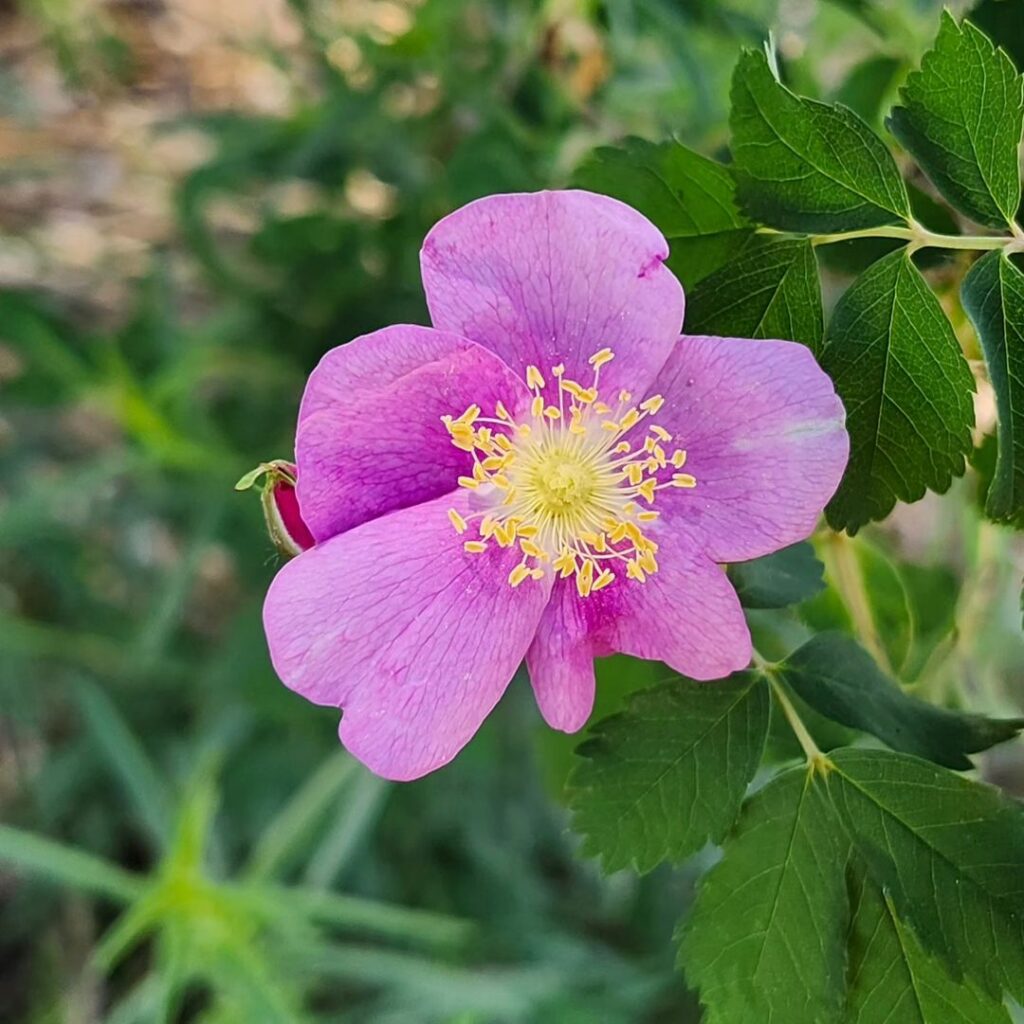
Nootka Rose Info: History and All
We’ll discuss the topic step by step. So, bear with us, and let’s dive into it:
History of Nootka Rose
The Nootka rose (Rosa nutkana) holds a significant place in the botanical history of the Pacific Northwest. Named after the Nootka Sound on Vancouver Island, where it was first documented by early explorers in the late 18th century, this wild rose has long been admired for its hardiness and beauty. It was noted by early botanists for its ability to thrive in diverse habitats, from coastal dunes to mountain forests.
During the Lewis and Clark expedition in the early 19th century, the Nootka rose gained further recognition as explorers documented its presence along their route to the Pacific Ocean. Its widespread distribution and adaptability to various soil types and climates underscored its importance as a resilient species in the region’s ecosystem.
Botanical studies throughout the 20th century further illuminated the ecological role of the Nootka rose, highlighting its contribution to soil stabilization and erosion control, particularly in coastal areas. Today, efforts to conserve and protect native plant species like the Nootka rose continue, recognizing their value in preserving biodiversity and maintaining healthy ecosystems in the face of environmental challenges.
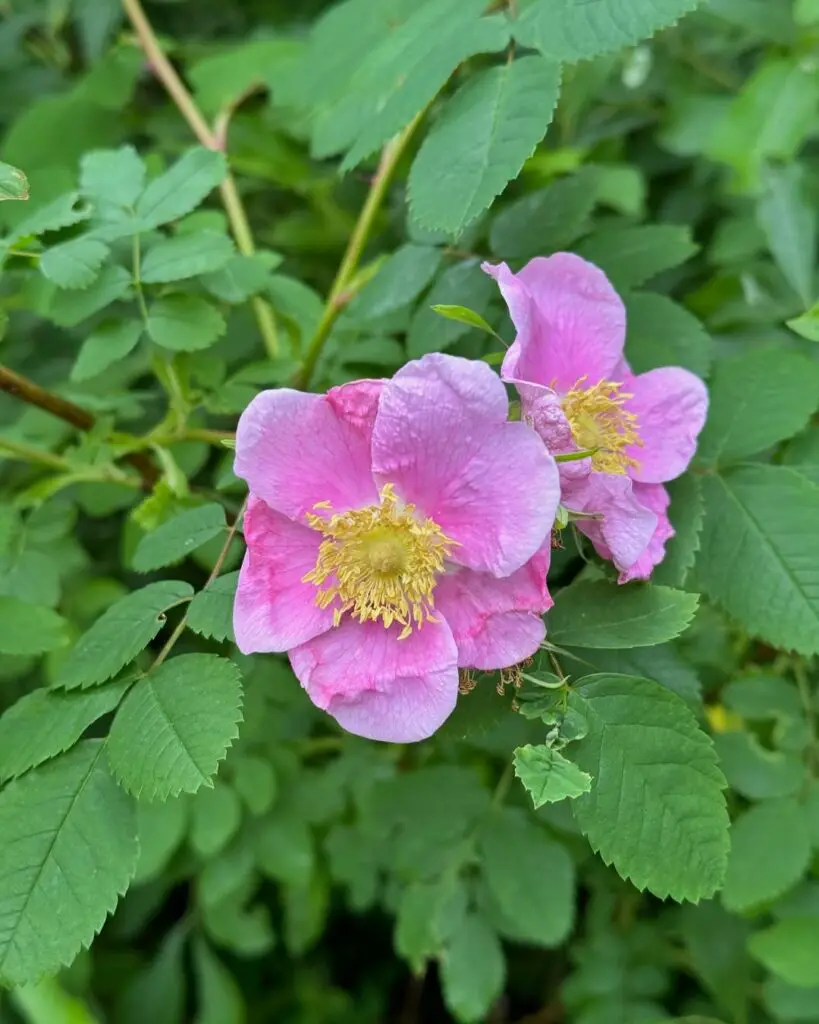
All About Nootka Roses
Plant Type
- Plant Type: The Nootka rose (Rosa nutkana) is a deciduous shrub.
- Plant Family: Rosaceae family.
- Genus: Rosa.
- Common Names: Also known as wild rose or Nutka rose.
Growing Conditions
- Exposure: Prefers full sun to partial shade.
- Seasons: Blooms from late spring to early summer.
- Height: Typically grows 4-6 feet tall.
- Spread: Can spread 3-5 feet wide.
- Spacing: Plant spacing of about 3-5 feet is ideal.
Soil and Environmental Requirements
- Soil Type: Thrives in well-drained soils.
- Soil pH: Prefers slightly acidic to neutral soil (pH 5.5-7.0).
- Water Requirements: Moderate water needs; prefers evenly moist soil.
- Light Requirements: Full sun to partial shade.
- Temperature Requirements: Hardy in USDA zones 4-9.
- Humidity Requirements: Tolerates varying humidity levels.
- Fertilization Requirements: Generally low maintenance; benefits from organic fertilizer in spring.
Maintenance
- Pests: Generally pest-resistant but can be susceptible to aphids and spider mites.
- Pruning: Prune after flowering to shape and remove dead wood.
- Mulching: Apply mulch around the base to retain moisture and suppress weeds.
- Propagation: Propagate through seeds, cuttings, or layering.
- Support: Staking may be needed for young or sprawling branches.
- Toxicity: Not typically toxic to pets, but ingestion may cause mild gastrointestinal upset.
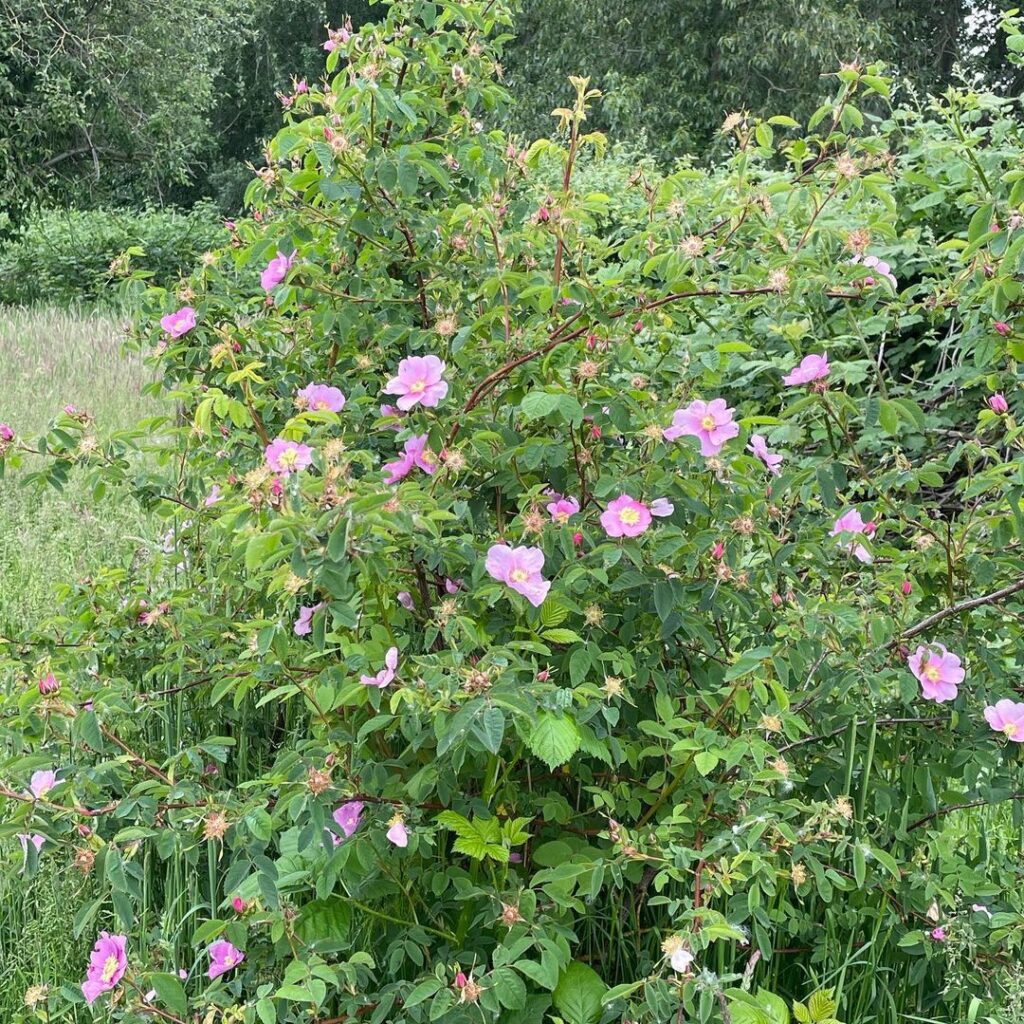
Uses of Nootka Rose Plants
Nootka rose plants (Rosa nutkana) offer a range of practical and aesthetic uses, making them valuable in various contexts:
1. Culinary Delights:
- Rose Hips: The fruits of Nootka roses, known as rose hips, are rich in vitamin C and antioxidants, making them a popular ingredient in teas, jams, and syrups.
- Edible Petals: The petals can be used to infuse flavor into desserts, salads, and beverages, adding a subtle floral note.
2. Medicinal Benefits:
- Traditional Remedies: Indigenous peoples have long used Nootka rose parts for medicinal purposes, including treatments for colds, sore throats, and digestive issues.
- Anti-inflammatory Properties: Studies highlight its potential as an anti-inflammatory agent due to its high content of polyphenols and flavonoids.
3. Wildlife Habitat:
- Food Source: Rose hips are a vital food source for birds and small mammals during fall and winter, contributing to local wildlife conservation efforts.
- Shelter and Nesting: The dense growth habit of Nootka rose bushes provides shelter and nesting sites for birds, enhancing biodiversity in natural habitats.
4. Erosion Control and Landscaping:
- Soil Stabilization: The extensive root system of Nootka rose plants helps prevent erosion along riverbanks and hillsides.
- Aesthetic Appeal: Landscapers utilize its graceful form and fragrant blooms in naturalistic gardens and restoration projects, enhancing visual appeal while promoting ecological balance.
Nootka rose plants thus serve as versatile contributors to both ecological health and human well-being, embodying the sustainable utilization of native flora in diverse environments.
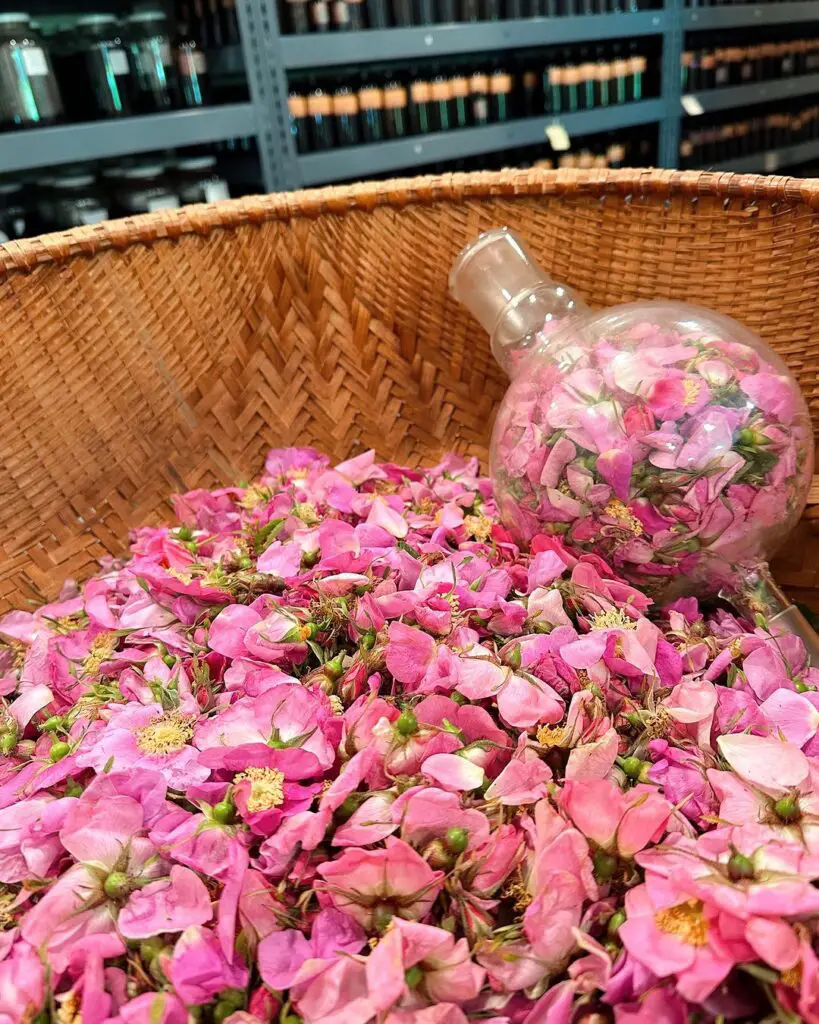
Famous Types/Names of Nootka Rose
The Nootka rose, Rosa nutkana, boasts several notable varieties, each distinguished by unique characteristics and adaptations to different environments:
1. Rosa nutkana var. hispida
- Description: Also known as the hairy rose, this variety is recognized for its densely hairy stems and leaves.
- Habitat: Typically found in moist, coastal regions and along riverbanks in the Pacific Northwest.
- Flowers: Pale to deep pink flowers with a sweet fragrance, blooming in clusters.
2. Rosa nutkana var. macdougalii
- Description: Named after the Scottish botanist John MacDougal, this variety is known for its compact growth and robust nature.
- Habitat: Thrives in a variety of habitats, from dry forests to open meadows.
- Flowers: Large, single blooms that range from white to light pink, attracting pollinators like bees and butterflies.
3. Rosa nutkana var. nutkana
- Description: The nominate variety, it is the most widespread form of Nootka rose.
- Habitat: Found throughout the Pacific Northwest, from sea level to mountainous regions.
- Flowers: Delicate pink blossoms that appear in profusion during the spring and summer months, contributing to the region’s floral diversity.
These varieties of Nootka rose showcase the adaptability and beauty of this native species, enriching both natural landscapes and garden settings with their distinctive features and ecological roles.
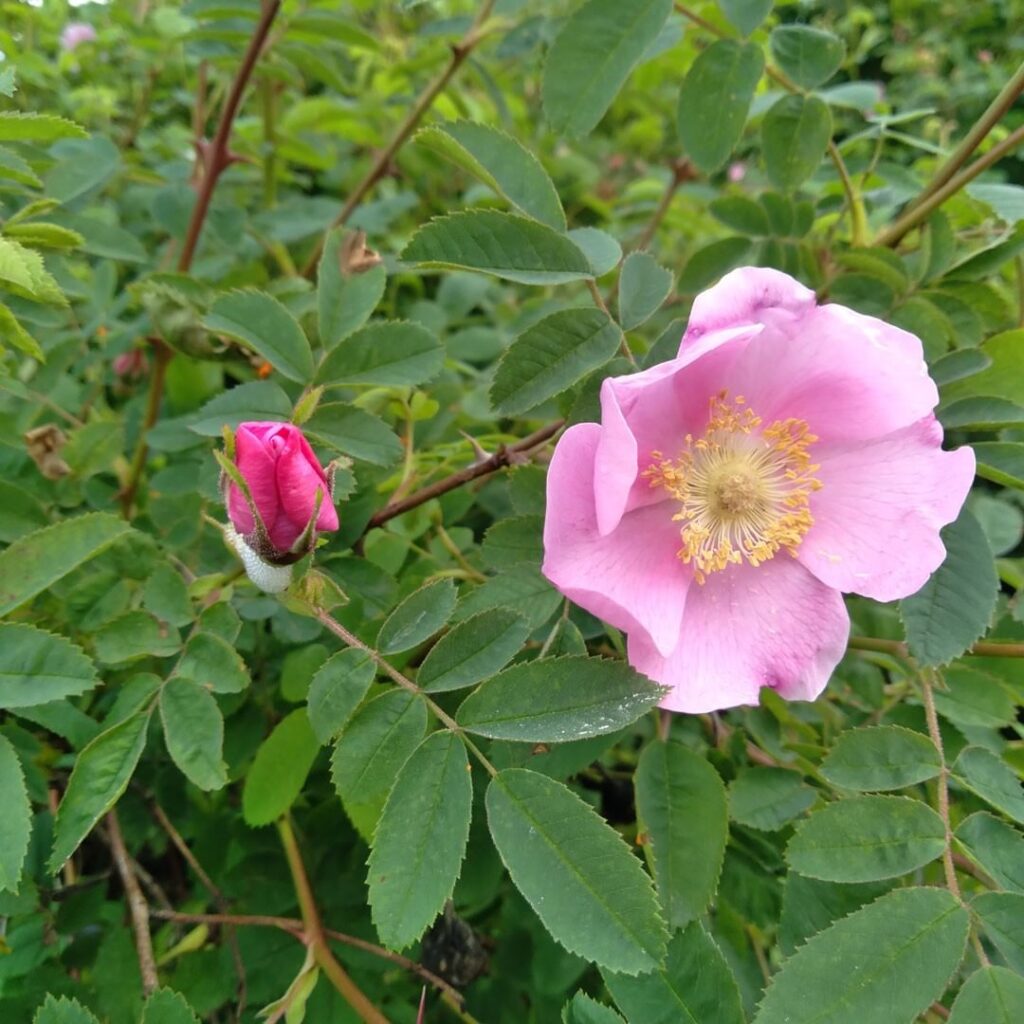
Frequently Asked Questions
What are the ideal growing conditions for Nootka roses?
Nootka roses thrive in cool, moist environments typical of the Pacific Northwest. They prefer well-drained soils and partial sun, though they can tolerate some shade. Coastal regions with moderate temperatures and regular rainfall are particularly favorable for their growth.
How do you care for Nootka roses?
Nootka roses require minimal care once established. Regular watering during dry spells and occasional pruning to remove dead or crossing branches helps maintain their health. Applying a layer of mulch around the base of the plant can help retain moisture and suppress weeds, promoting vigorous growth and abundant flowering.
When do Nootka roses bloom?
Nootka roses typically bloom from late spring to early summer. Their fragrant pink flowers appear in clusters along the arching branches, creating a picturesque display against the backdrop of their green foliage. The bloom period varies slightly depending on local climate conditions and the specific microhabitat where they are growing.
What wildlife do Nootka roses attract?
Nootka roses attract a variety of wildlife, including pollinators like bees and butterflies that are drawn to their nectar-rich flowers. Birds also find the rose hips, which follow the blooms, particularly appealing. The plant’s dense growth and thorny branches provide nesting sites and shelter for small mammals and birds throughout the year.
Conclusion
In conclusion, the Nootka rose stands as a symbol of resilience and natural beauty in the Pacific Northwest. Its fragrant pink blossoms and hardy demeanor make it a cherished inhabitant of coastal landscapes, thriving in the cool, moist conditions of its native habitat.
Beyond its aesthetic appeal, the Nootka rose plays a crucial role in supporting local wildlife, offering food and shelter throughout the seasons. By understanding and appreciating the unique characteristics of the Nootka rose, we gain insight into the intricate relationships that sustain biodiversity and enrich our natural surroundings.

I’m Shofi, a passionate gardener and blogger. I have 10+ years of experience in gardening and hold certifications in horticulture and garden design. I share my knowledge and skills through my garden blog to inspire and educate others on the joys of gardening. I try to provide valuable information and create a community for gardeners of all levels to connect and learn. My ultimate goal is to inspire others to start their own gardens and connect with nature.

